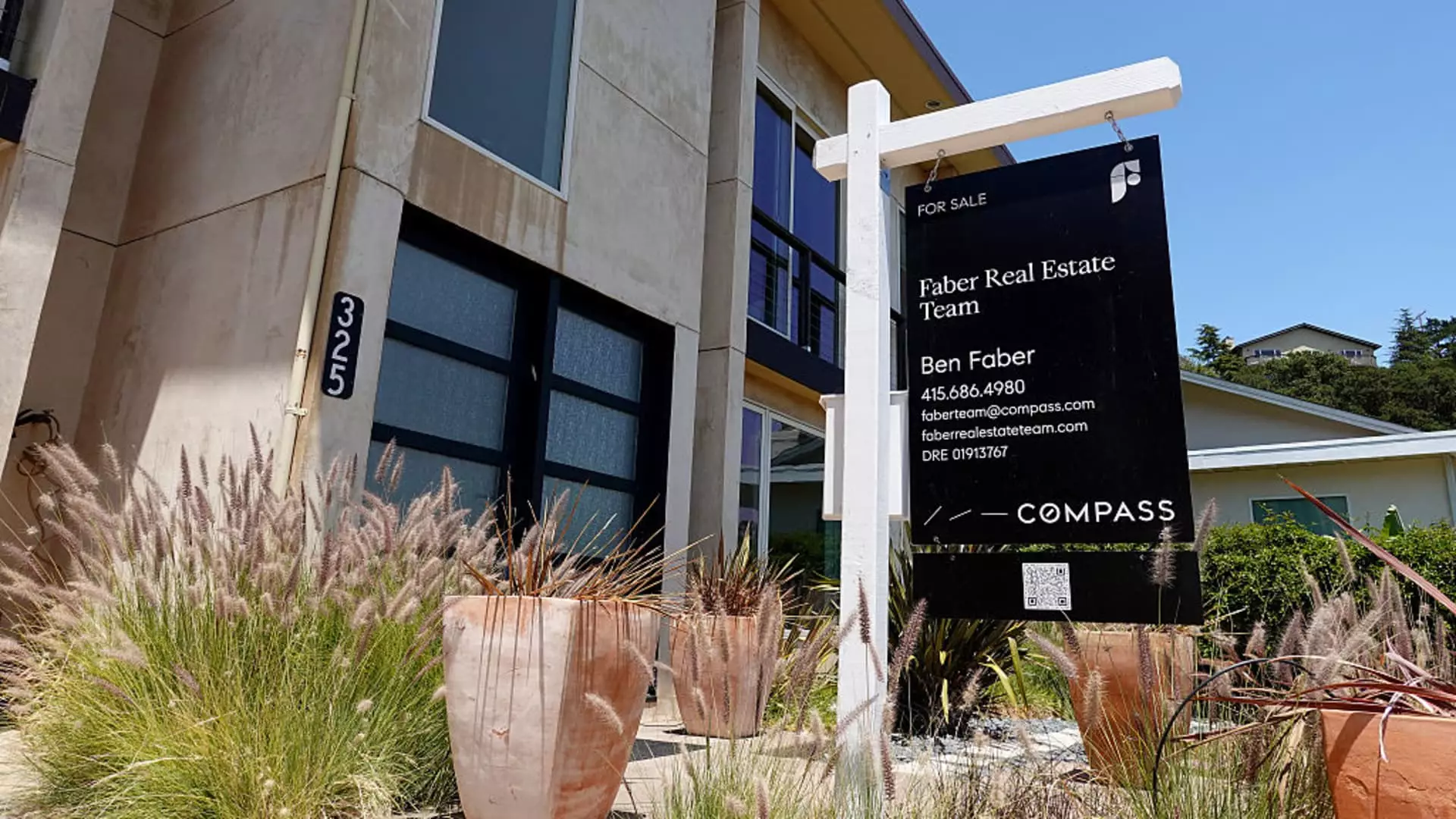The housing market is embarking on a surprising journey, one that is marked by a deliberate slowdown in price growth that has caught many off guard. As we enter a new economic landscape, the once-frenzied pace of home price increases has dwindled to a timid 2.7% annual rise, according to the latest S&P CoreLogic Case-Shiller Index. This figure paints a picture of a market in transition; the frenzied growth seen in previous years is beginning to feel like a distant memory. Instead of continuing its rise, the market is now cooling off, and the alarming decline appears to be accelerating faster than anticipated.
This economic pivot speaks to deeper, systemic issues that may pose a threat to the vibrancy of the housing market as we know it. While traditional safeguards against sharp corrections, like a constrained supply of homes, provide some reassurance, the reality of rising interest rates has the potential to destabilize the already fragile foundation upon which the market rests. Higher mortgage rates, pushing beyond the 7% threshold, translate into monthly payments that are increasingly out of reach for many buyers, particularly first-timers who historically make up a significant segment of home purchasers. With only 30% of May sales attributed to these buyers, the market’s ability to thrive is being called into question.
Winners and Losers in a Shifting Landscape
At a glance, the housing market seems to be undergoing a significant reshuffling of regional winners and losers. Historically stable markets in the Midwest and Northeast are starting to outshine their pandemic-era counterparts, which enjoyed unprecedented demand and soaring prices. New York, Chicago, and Detroit have seen price gains as high as 7.9%, 6%, and 5.5%, respectively. Yet in contrast, once-hot markets like San Francisco, Tampa, and Dallas appear to be struggling, with some areas already experiencing negative price growth.
This fluctuation raises several important questions: Are we witnessing the rebirth of stability in regions that have long been overshadowed by the burgeoning Sun Belt? Or are we merely observing a temporary blip, a calm amidst the storm of possible declines ahead? The notion that the market is maturing and driven by more sustainable factors is an optimistic perspective, yet the stark contrast between thriving cities and those facing downturns paints a more complex picture.
Fundamentals vs. Speculation
The prevailing sentiment from analysts suggests that this dramatic shift away from speculative buying is a sign of a market maturing in a manner that reflects more traditional economic fundamentals. Nicholas Godec of S&P Dow Jones Indices asserts that “markets that were pandemic darlings are now lagging.” When the dust settles, it could mean that properties in these previously overlooked locations flare up in value as investors and buyers realize the inherent stability of established markets. Yet one cannot ignore the specter of panic that looms large, especially for those who saw real estate as an unwavering investment.
With supply slowly rising but still trapped below pre-pandemic levels, the optimistic narrative sees home prices as shielded from sharp declines. While just 6% of sellers might be facing the risk of selling at a loss—an encouraging statistic compared to previous tumultuous times—the tension within the market suggests that complacency could lead to major pitfalls. The balance of supply and demand remains fragile, and the reluctance of homeowners to relinquish their low-interest mortgages serves as a double-edged sword.
The Future: A Game of Survival
As we look to the horizon, the future of the housing market remains uncertain. A precarious balancing act between rising supply and dwindling demand is set against the backdrop of increasing interest rates that threaten the financial prospects of many buyers. It is essential to recognize that while the market may not be on the cusp of a meltdown akin to that of the subprime crisis, it is undoubtedly confronting a reality that could unravel the very fabric of its recent recovery.
The signs are clear: the days of uninhibited growth may be numbered. Homebuyers are increasingly bearing the brunt of a complex economic landscape that requires navigating both rising costs and fluctuating market dynamics. In this new paradigm, adaptations will be necessary. Investors and potential homeowners alike must reconsider their strategies, lest they find themselves ensnared in a market transformed from a playground of opportunity to a precarious battleground. Without a concerted effort to address these underlying issues holistically, we may very well witness a housing market that flounders rather than flourishes.



Leave a Reply